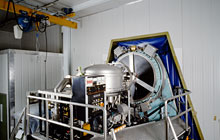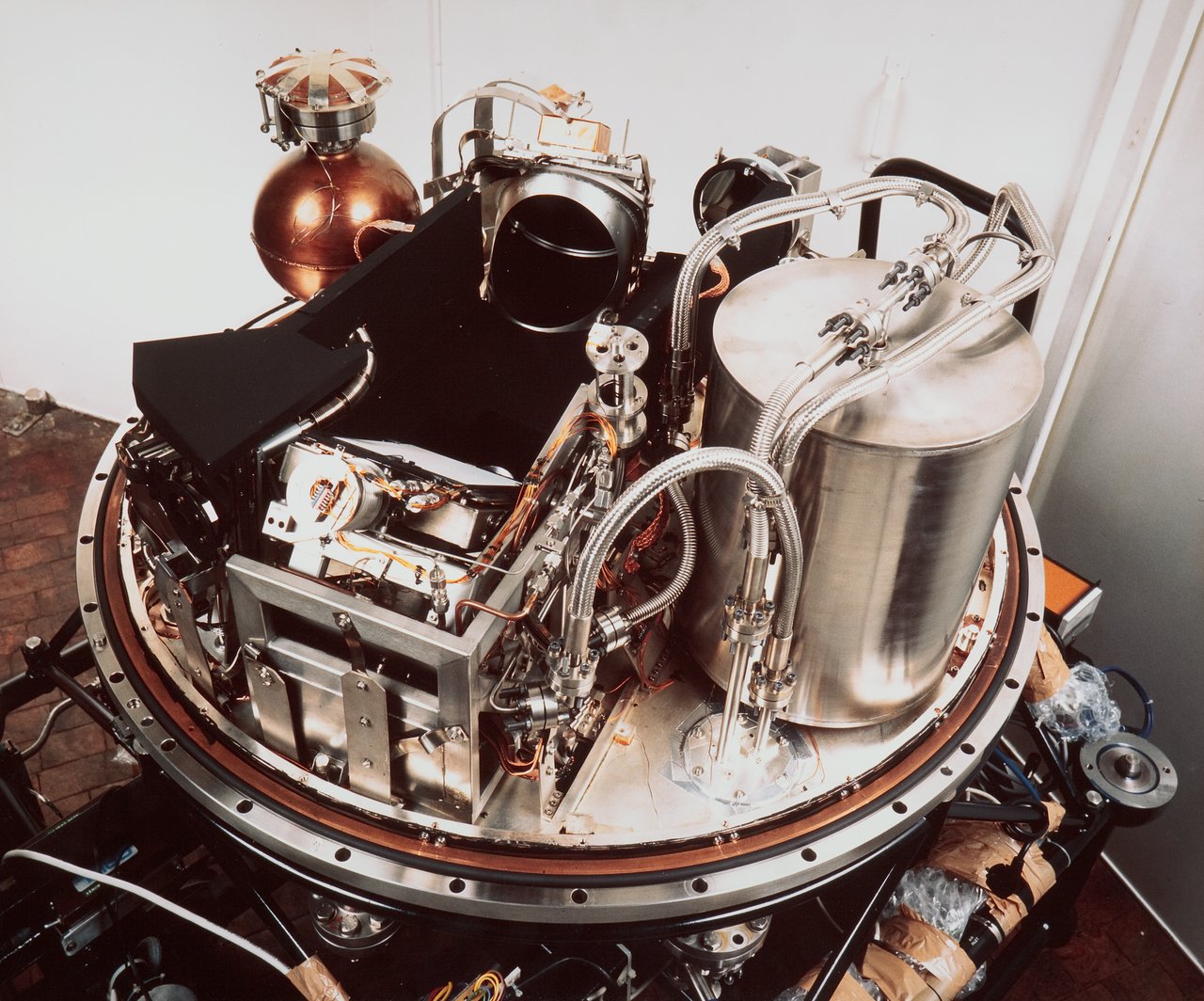IRSPEC
Infrared Spectrometer
 IRSPEC (Infrared Spectrometer) was a multi-purpose spectrometer first installed on the ESO 3.6-metre telescope in the mid-1980s.
IRSPEC (Infrared Spectrometer) was a multi-purpose spectrometer first installed on the ESO 3.6-metre telescope in the mid-1980s.
Spectrometers collect and separate wavelengths of light to produce what is called a spectra. Spectra can be analysed to learn about the composition, speed, and a number of other characteristics of astronomical objects. IRSPEC gathered near-infrared wavelengths, which allowed astronomers to study gas and dust rich astronomical objects, such as newborn stars.
Cold liquid nitrogen ran throughout IRSPEC to lower the temperature of the optical components to -193 ºC and the detector to -223 ºC. Heat generated from running the instruments can contaminate the data with heat noise, so cooling instruments can create sharper spectra.
Data taken with IRSPEC formed part of a number of studies during the 1980s and 1990s, including the research of comets, supernova, and nebula. In 1994, researchers used IRSPEC to search for molecules in the impacts of Shoemaker-Levy 9 on Jupiter (eso9402).
After several years on the ESO 3.6-metre telescope, IRSPEC was installed as one of the first instruments on the New Technology Telescope (NTT) in 1989. Developments in infrared technology during the 1990s resulted in more sensitive infrared instruments, and when compared to new technology, the IRSPEC suffered from more noise. In 1997, SOFI (Son of ISSAC) spectrograph therefore replaced IRSPEC on the NTT.
IRSPECThis table lists the global capabilities of the instrument.
|
